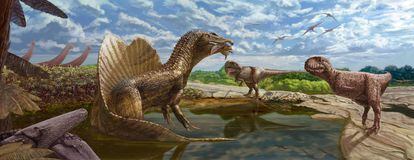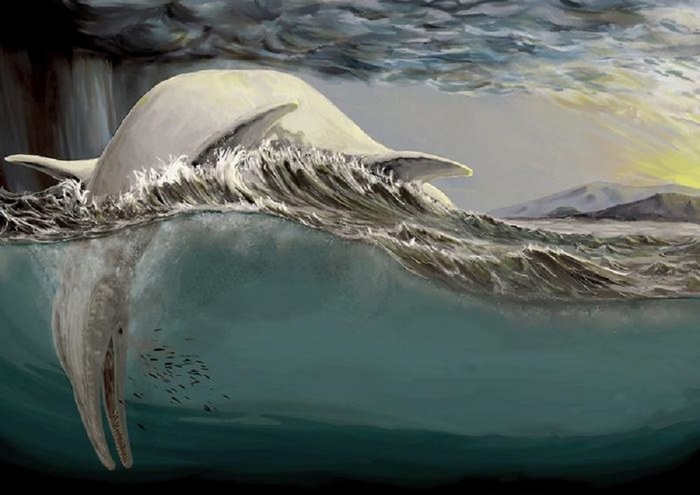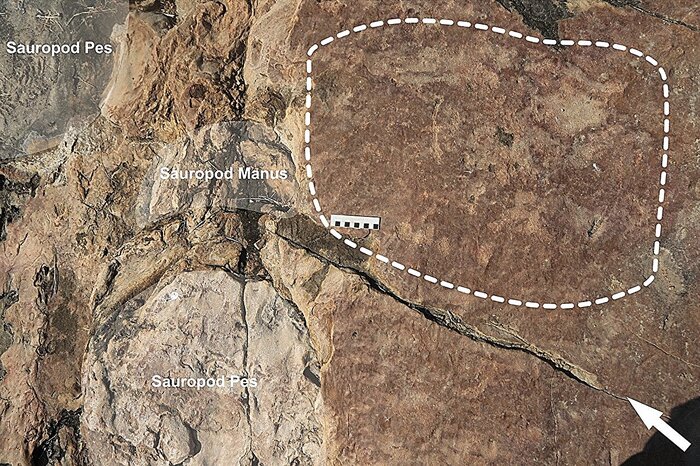A team of Egyptian scientists has announced the discovery of the fossil of a large carnivorous dinosaur that lived about 98 million years ago in what is now the Bahariya oasis in Egypt's western desert.
It is a well-preserved cervical vertebra, and is the first evidence of a member of the group of dinosaurs to which Tyrannosaurus rex belongs found in this region rich in fossils.
Specifically, the cervical vertebra, which researchers have named MUVP 477, belongs to the family of abelisaurids, carnivorous theropod dinosaurs, and represents the oldest known remains at least in Northeast Africa, according to the study.
"Based on the comparative anatomy we did of our material, which corresponds to the 10th cervical vertebra, we know that it really did have a bulldog face, with very sharp teeth, a huge skull and very small arms," explains Hesham Sallam, the leader of the study and founder of the Center for Vertebrate Paleontology at Mansoura University.
“Carnivorous dinosaurs were also characterized by their short necks, huge faces and skulls, and large tails that allowed them to run fast and chase prey,” he adds.
Abelisaurid vertebra in the Bahariya oasis. Hesham Sallam
The dinosaur to which the vertebra found in Bahariya belonged lived during the mid-Cretaceous period, approximately 145 to 66 million years ago.
At that time, the researchers explain that what is now the Bahariya oasis stood out for its unusual abundance of carnivorous dinosaurs, many exceptionally large, and for a scarcity of herbivores, a composition similar to that found in the Kem Kem geological formation, in western Morocco, and in the Elrhaz formation in Niger.
The finding, which represents a new indication of the wide geographical distribution of this species in what is now North Africa, bears similarities to the remains of other dinosaurs found in Madagascar and South America, which in turn offers more evidence about the formation of the present continents.
“It is the kind of clear evidence that the fragmentation between continents occurred in a sequence where Madagascar first separated from the [continental bloc] of Gondwana, our continent, and later came the separation between South America and Africa.
Because their fossils are very similar to ours,” says Sallam.
a rich oasis
Sallam's team found the cervical vertebra, along with multiple other fossil remains, during a 2016 expedition in the northern part of the Bahariya Oasis Depression, famous for its richness in fossils and for the discovery of other large dinosaurs since the early 19th century. twentieth century.
The latest find thus adds to the already very diverse record of dinosaurs from this 98-million-year-old geological formation.
An artist's rendering of what the Bahariya Oasis might have looked like a hundred million years ago.Andrew McAfee
According to the researchers' description, the vertebra found is in a good state of preservation and almost complete, which has allowed them to estimate the dimensions of the dinosaur, which they believe measured about six meters in length from the nose to the tip of the tail. .
Furthermore, since the dinosaur belongs to the same family as others discovered in Madagascar and South America, they have also been able to deduce its appearance.
In this sense, the researchers consider that the latest finding in the Egyptian region further reinforces the scenario that a diverse fauna of large carnivorous dinosaurs existed in what is now North Africa at that time.
Before the discovery of the Bahariya vertebra, the only known remains of this type of dinosaur in Egypt was an isolated tooth found in the Nile Valley in the south of the country.
In the shadow of the most mediatic archaeological discoveries of Ancient Egypt, the country has also noted in recent years important prehistoric finds such as a species of semi-aquatic whale from about 43 million years ago and, last February, the footprints of some dinosaurs from about 70 million years ago.
Researchers from the universities of Ohio and Michigan and the Carnegie Museum of Natural History in Pittsburgh participated in the study of the abelisaurid vertebra in particular.
Sallam, for his part, believes that the latest find is a new sample of the great potential, largely untapped, of the formation of the Bahariya oasis, which he considers still keeps more remains in its bowels that can offer new clues about the passage of the dinosaurs through what is now North Africa.
"This will make us go back [to Bahariya] to look for more remains of this animal, because this would really allow us to get a clearer idea of the ecosystem at that time," slides the paleontologist.
You can follow
MATERIA
on
,
and
, or sign up to receive
our weekly newsletter
.


/cloudfront-eu-central-1.images.arcpublishing.com/prisa/DGAXPTVHVNGTDKDEMOMYHMEFHI.jpg)












